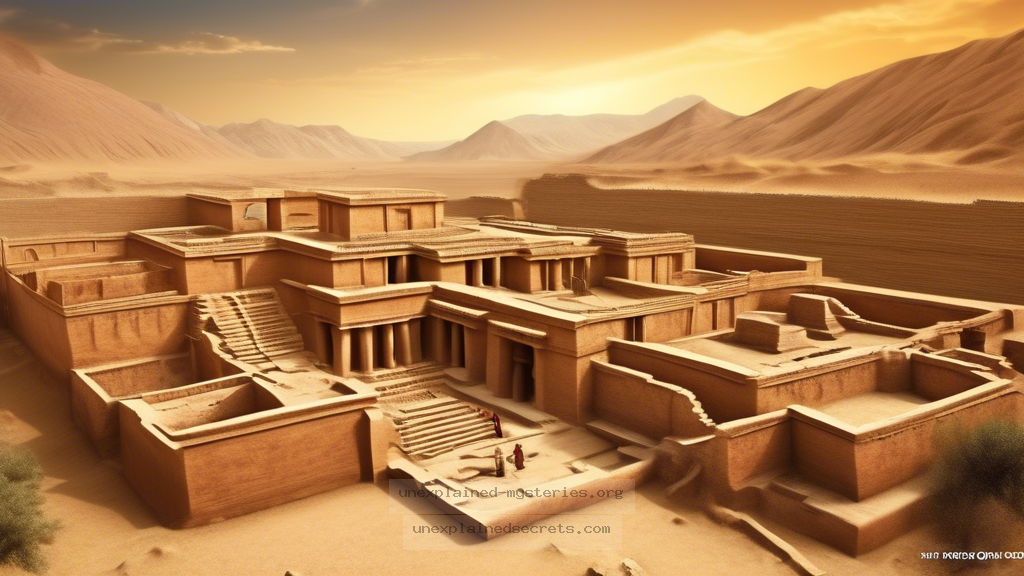What Happened to the Advanced Civilization of the Indus Valley?
What Happened to the Advanced Civilization of the Indus Valley?
The mystery surrounding the Indus Valley Civilization (IVC), one of the world’s earliest urban cultures, continues to baffle historians and archaeologists alike. Established around 2500 BCE in what is now Pakistan and northwest India, the IVC boasted advanced urban planning, sophisticated drainage systems, and a unique script that remains undeciphered. But what led to its sudden decline and disappearance? Understanding this enigma is crucial because it provides insights into the rise and fall of civilizations, the dynamics of environmental changes, and human resilience. This post will delve into the various theories and evidence surrounding this captivating lost civilization.
Historical Context: The Indus Valley Civilization
The Indus Valley Civilization is often regarded as one of the cradles of civilization, alongside Mesopotamia and Ancient Egypt. With major urban centers like Harappa and Mohenjo-Daro, the IVC was characterized by:
- Well-planned cities with grid patterns
- Advanced drainage and sewage systems
- Standardized weights and measures
- A thriving trade network with neighboring cultures
At its peak, the Indus Valley covered an area of approximately 1.25 million square kilometers, inhabited by up to five million people. The civilization’s sophistication is evident in its architecture, public baths, and the use of baked bricks. However, around 1900 BCE, the IVC began to decline, leading to its eventual disappearance by 1300 BCE. Understanding the factors contributing to this decline is essential for historical comprehension and present-day implications.
Theories Behind the Decline of the Indus Valley Civilization
Several theories have been proposed to explain the sudden decline of the Indus Valley Civilization, ranging from environmental changes to socio-political factors. Here are some of the most prominent theories:
1. Climate Change
One of the most widely accepted theories is that significant climate changes led to the decline of the IVC. Evidence suggests that around 2000 BCE, the region experienced a shift towards drier conditions. The aridification of the area could have severely impacted agriculture, which was the backbone of the IVC economy. Crops may have failed, leading to food shortages and eventual migration.
2. River Dynamics
The Indus River and its tributaries were vital for the IVC’s agricultural success. However, geological studies indicate that the river’s course may have changed due to tectonic activity, leading to decreased water availability. The drying-up of rivers would have jeopardized irrigation and drinking water supplies, forcing populations to abandon their cities.
3. Socio-Political Factors
Another theory posits that internal strife or social upheaval contributed to the decline. As resources became scarcer, competition for land and water could have led to conflict among communities. This potential breakdown of social cohesion may have made it difficult for the civilization to sustain itself amid mounting pressures.
4. Invasion or Migration
Invasions by outside forces or migrations of other groups have also been suggested as causes of the IVC’s decline. Some scholars argue that the arrival of the Indo-Aryans, who are believed to have migrated into the Indian subcontinent around the same time, could have played a role in the collapse of the Indus Valley Civilization. However, archaeological evidence supporting this theory remains inconclusive.
Core Concepts: Urban Planning and Technology of the IVC
The IVC was remarkable for its urban planning and architectural achievements. Cities like Mohenjo-Daro featured:
- Grid layouts with streets oriented north-south and east-west
- Advanced drainage systems, including covered drains and soak pits
- Public baths, which suggest a focus on hygiene and social interaction
The presence of standardized weights and measures indicates a sophisticated economy based on trade. The IVC’s unique script, which remains undeciphered, hints at a complex society, possibly with a form of governance or organized religion. The technological advancements achieved by the IVC are a testament to the capabilities of ancient civilizations.
Practical Implications: Lessons from the IVC
The lessons derived from studying the IVC’s rise and fall are multifaceted. Here are some practical implications:
- Understanding environmental resilience and adaptability in urban planning
- Recognizing the importance of sustainable practices in agriculture
- Evaluating the impacts of social and political dynamics on societal stability
As modern societies face similar challenges related to climate change, resource management, and social cohesion, the lessons from the IVC can serve as valuable guidelines for sustainable development.
Alternative Perspectives on the IVC’s Disappearance
While the prevailing theories provide insight into the decline of the Indus Valley Civilization, alternative perspectives suggest that the end of the IVC might not have been as abrupt as previously thought. Some researchers propose that rather than a complete collapse, the civilization might have transitioned into new forms of social organization. For instance, the inhabitants could have migrated to surrounding areas and integrated into emerging cultures, such as the Vedic culture, which followed the IVC.
This perspective emphasizes the continuity of cultural practices and technological knowledge, which may have persisted despite the political and urban changes. The idea that the IVC’s legacy continued through its descendants contributes to a more nuanced understanding of ancient civilizations.
Common Misconceptions About the Indus Valley Civilization
Misunderstandings about the IVC can lead to oversimplified narratives regarding its decline. Here are some common misconceptions:
- All cities were abandoned simultaneously: Evidence suggests that the decline was gradual, with some cities remaining inhabited longer than others.
- The civilization was primitive: The IVC’s technological and architectural advancements demonstrate a high level of sophistication.
- There was a single cause for decline: The collapse was likely due to multiple interrelated factors rather than a single event.
Best Practices for Investigating Lost Civilizations
Studying lost civilizations like the Indus Valley requires a multidisciplinary approach. Here are some best practices for researchers and enthusiasts:
- Utilize modern technology: Techniques such as remote sensing, ground-penetrating radar, and GIS mapping can uncover hidden sites and features.
- Engage in interdisciplinary collaboration: Combining insights from archaeology, anthropology, climatology, and history provides a comprehensive understanding.
- Prioritize sustainable excavation methods: Ensure that archaeological practices do not harm the sites and preserve them for future research.
By adhering to these practices, researchers can continue to unlock the mysteries of ancient civilizations while respecting their historical significance.
Future Developments and Ongoing Research
Research on the Indus Valley Civilization is ongoing, with new discoveries and technologies continually reshaping our understanding. Some areas of focus include:
- Deciphering the Indus script: Efforts to understand the unique writing system could provide insights into the social and political organization of the IVC.
- Climate studies: Research into ancient climate patterns can help determine how environmental changes influenced the civilization’s decline.
- Archaeological excavations: New sites are being discovered, which can shed light on the extent and diversity of the IVC.
The future of IVC research holds promise as scholars continue to explore its complexities and contribute to our understanding of human history.
Conclusion
The mystery of the Indus Valley Civilization’s decline remains one of archaeology’s most intriguing puzzles. The combination of environmental, social, and possibly political factors paints a picture of a civilization that was sophisticated yet vulnerable to change. By examining the rise and fall of the IVC, we glean essential lessons about sustainability, adaptability, and the human experience. As researchers continue to explore this lost civilization, we can only hope to uncover more secrets that will deepen our understanding of our shared past.
Other Articles
Recent Posts
- What Happened to Flight MH370? The Conspiracy Theories That Still Haunt Us
- What Secrets Lurk Within the Walls of the Infamous Trans-Allegheny Lunatic Asylum?
- What Evidence Supports the Existence of Bigfoot in the Pacific Northwest?
- What Happened to the Indus Valley Civilization? Unraveling the Mysteries of Ancient Urban Life
- Can Telepathy Be Scientifically Proven Through Laboratory Evidence?







